Abstract
Contingengy-specifying stimuli (CSSs) can function differently than discriminative stimuli. Rather than evoking behavior due to a history of discrimination training, they alter the function of other stimuli and, therefore, the behavioral relations involving those stimuli. CSSs can alter the evocative function of discriminative stimuli, establishing operations, and conditional stimuli, as well as the efficacy of reinforcing and punishing stimuli and of stimuli that can function in second-order respondent conditioning. The concept of function-altering CSSs has implications for such areas of interest as stimulus equivalence, the terminology involving “rules” and “rule-governed behavior,” and the way in which behavior analysts view the effects of such basic processes as reinforcement and punishment.
Keywords: contingency-specifying stimuli, function-altering effects, verbal stimuli, rules
Full text
PDF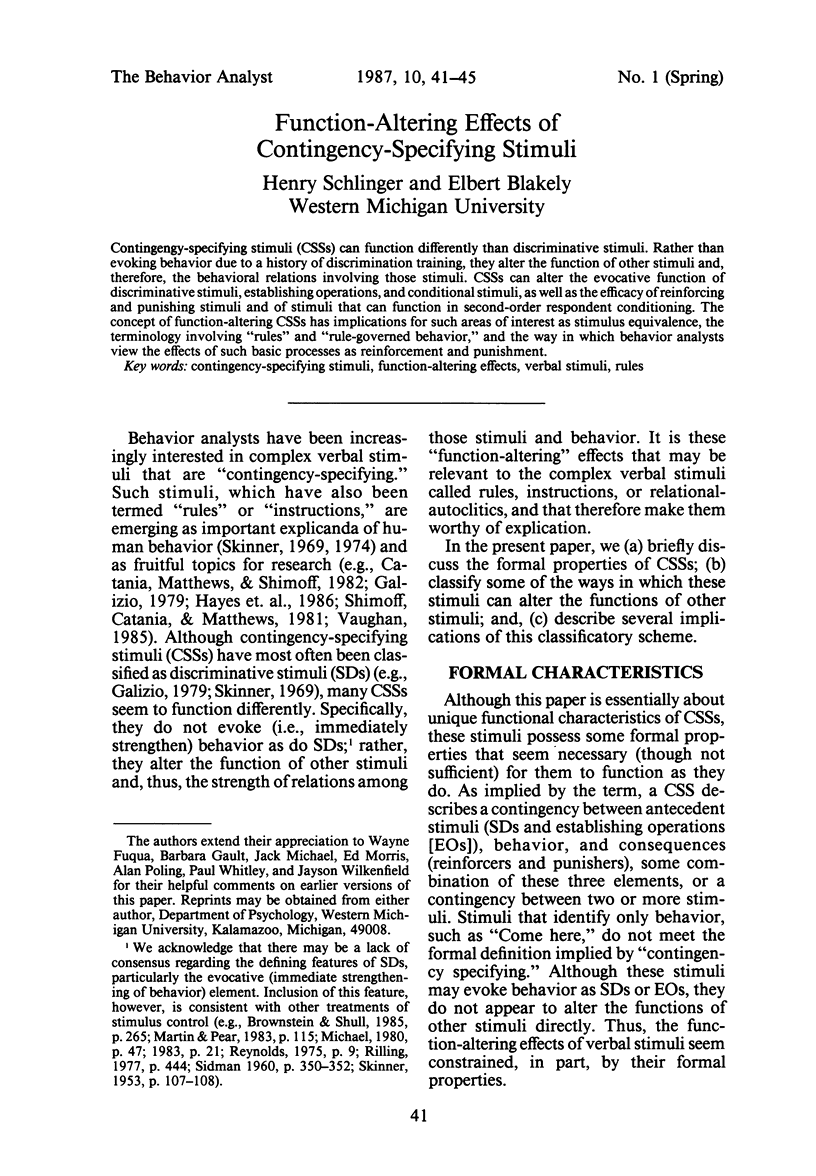
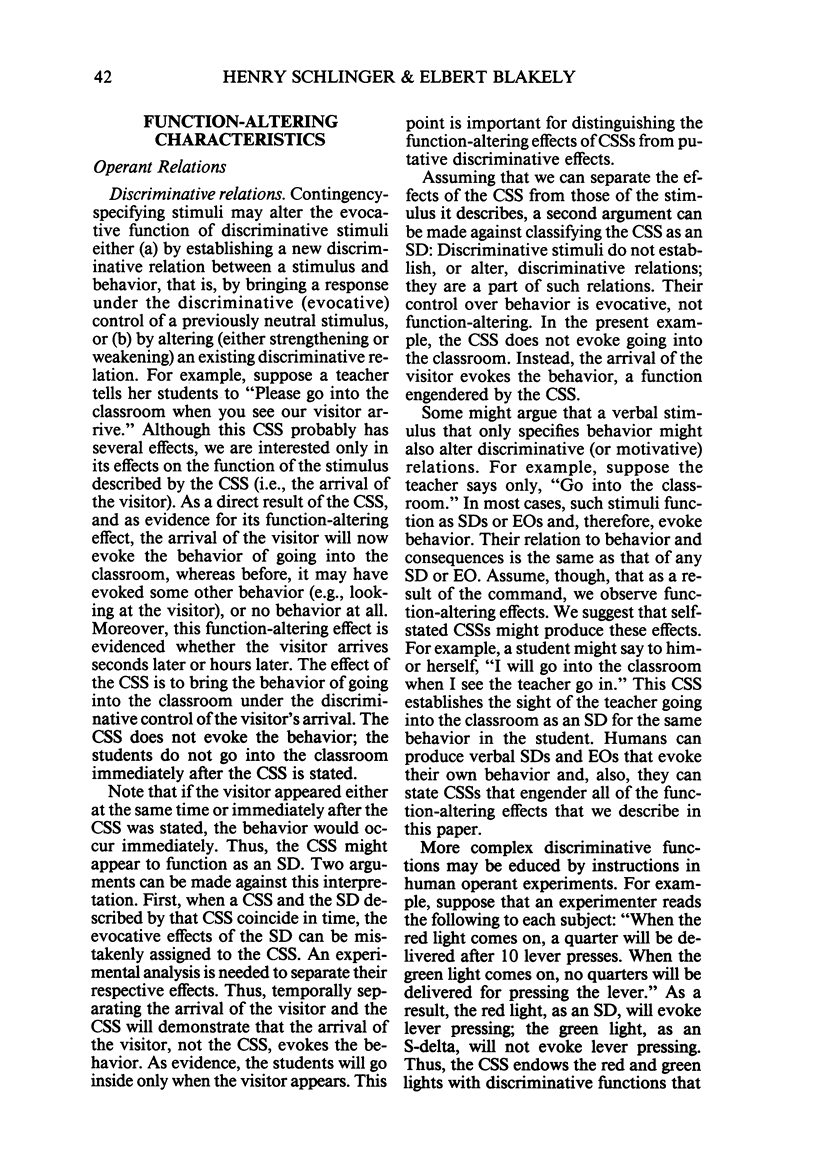
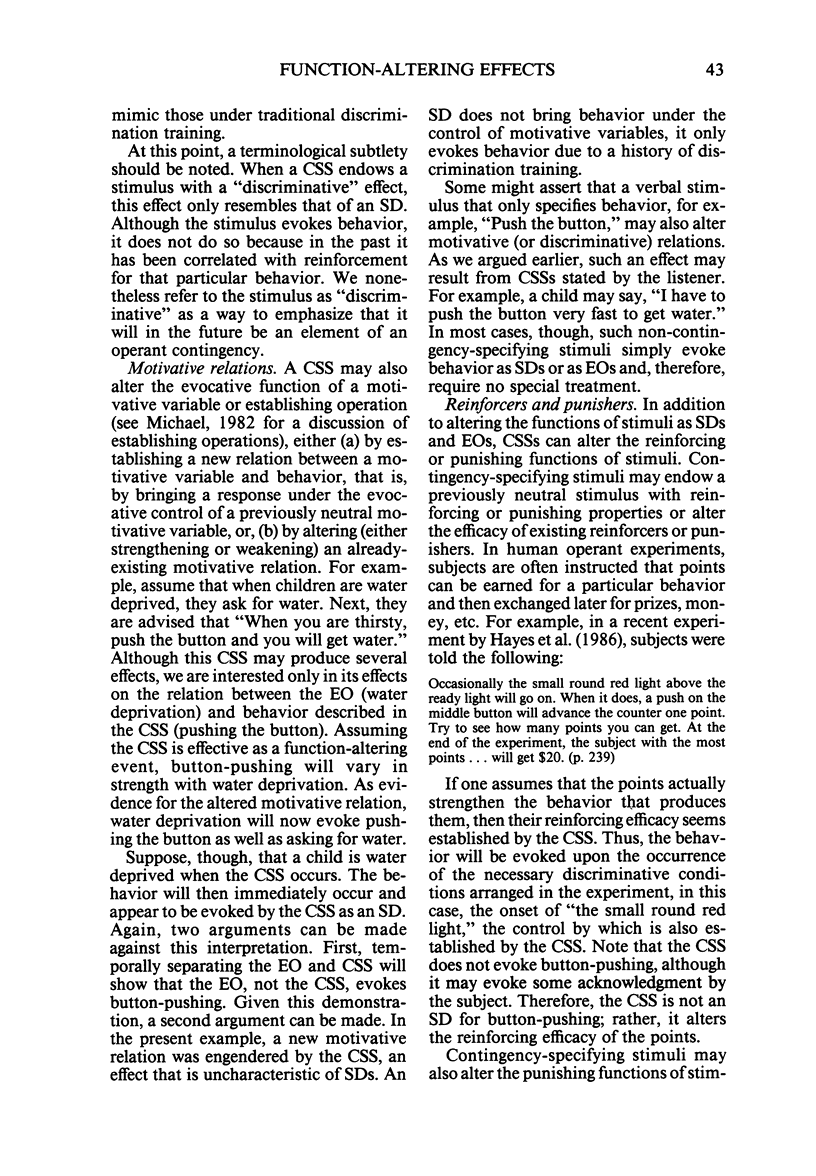
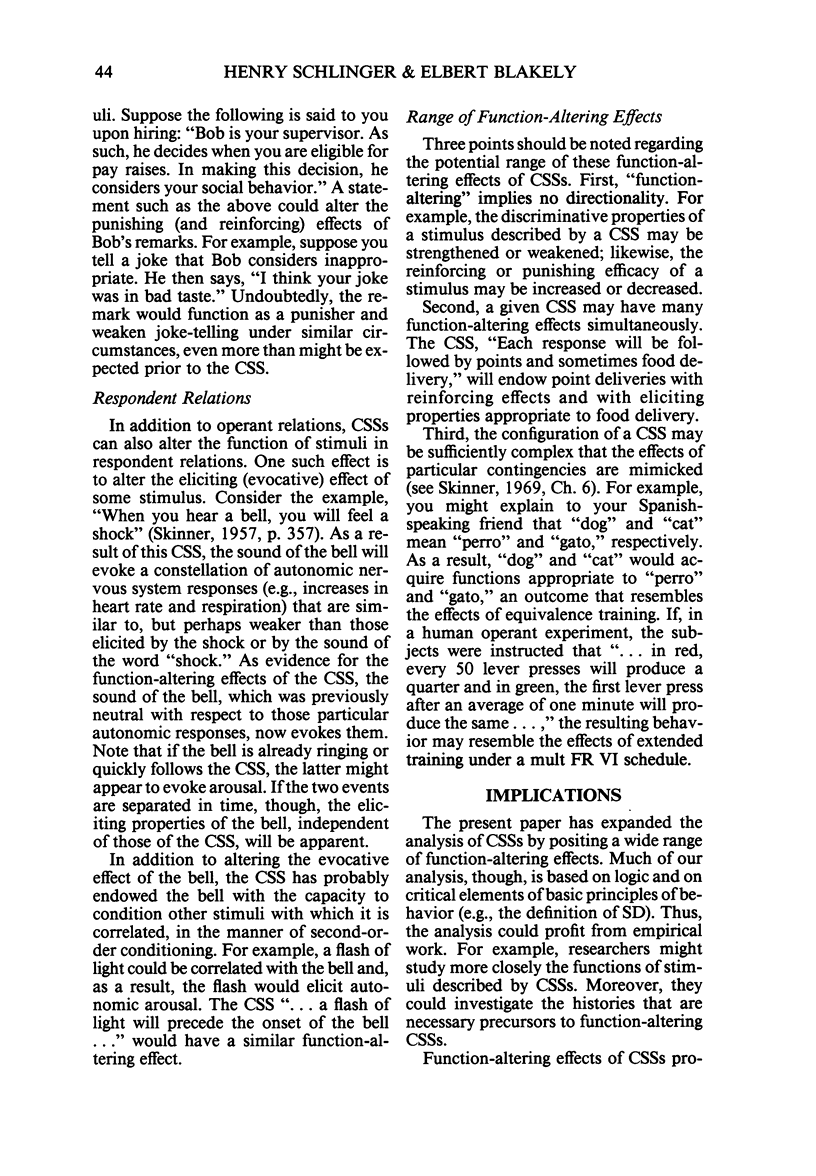
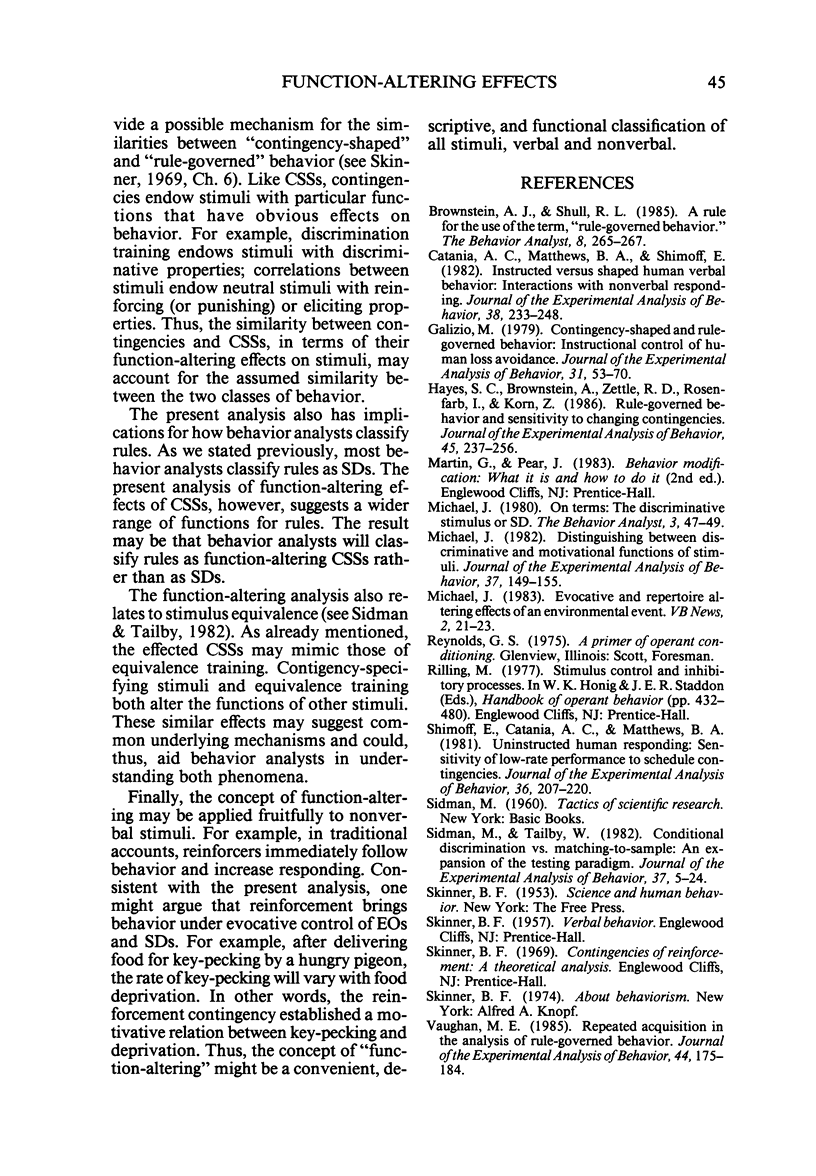
Selected References
These references are in PubMed. This may not be the complete list of references from this article.
- Brownstein A. J., Shull R. L. A rule for the use of the term, "Rule-governed behavior". Behav Anal. 1985 Fall;8(2):265–267. doi: 10.1007/BF03393158. [DOI] [PMC free article] [PubMed] [Google Scholar]
- Catania A. C., Matthews B. A., Shimoff E. Instructed versus shaped human verbal behavior: Interactions with nonverbal responding. J Exp Anal Behav. 1982 Nov;38(3):233–248. doi: 10.1901/jeab.1982.38-233. [DOI] [PMC free article] [PubMed] [Google Scholar]
- Galizio M. Contingency-shaped and rule-governed behavior: instructional control of human loss avoidance. J Exp Anal Behav. 1979 Jan;31(1):53–70. doi: 10.1901/jeab.1979.31-53. [DOI] [PMC free article] [PubMed] [Google Scholar]
- Hayes S. C., Brownstein A. J., Zettle R. D., Rosenfarb I., Korn Z. Rule-governed behavior and sensitivity to changing consequences of responding. J Exp Anal Behav. 1986 May;45(3):237–256. doi: 10.1901/jeab.1986.45-237. [DOI] [PMC free article] [PubMed] [Google Scholar]
- Michael J. Distinguishing between discriminative and motivational functions of stimuli. J Exp Anal Behav. 1982 Jan;37(1):149–155. doi: 10.1901/jeab.1982.37-149. [DOI] [PMC free article] [PubMed] [Google Scholar]
- Michael J. The discriminative stimulus or S(D). Behav Anal. 1980 Spring;3(1):47–49. doi: 10.1007/BF03392378. [DOI] [PMC free article] [PubMed] [Google Scholar]
- Shimoff E., Catania A. C., Matthews B. A. Uninstructed human responding: Sensitivity of low-rate performance to schedule contingencies. J Exp Anal Behav. 1981 Sep;36(2):207–220. doi: 10.1901/jeab.1981.36-207. [DOI] [PMC free article] [PubMed] [Google Scholar]
- Sidman M., Tailby W. Conditional discrimination vs. matching to sample: an expansion of the testing paradigm. J Exp Anal Behav. 1982 Jan;37(1):5–22. doi: 10.1901/jeab.1982.37-5. [DOI] [PMC free article] [PubMed] [Google Scholar]
- Vaughan M. E. Repeated acquisition in the analysis of rule-governed behavior. J Exp Anal Behav. 1985 Sep;44(2):175–184. doi: 10.1901/jeab.1985.44-175. [DOI] [PMC free article] [PubMed] [Google Scholar]


